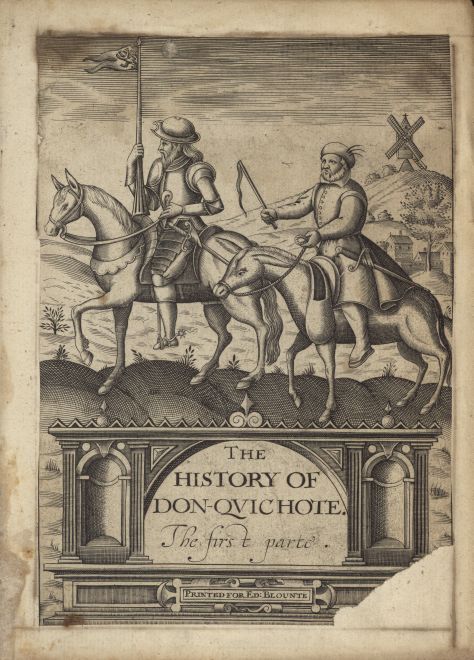
click to enlarge
Don Quixote's iconography is already clearly and well-established.
A pedestal with the title has been included in such a way that the whole representation seems an equestrian classical sculpture.
The engraving is of better quality than in the French title page.
2 - The 1618 French title page did not include a pedestal with the title.
Blounte first included this illustrated title page in his re-edition of the first part c. 1620 and also in some copies of the second part (1620; before the re-edition of the first part). As a result, some copies of the second part have two title pages: the illustrated one and the original one not illustrated).
The volumes with both parts printed together can include two illustrated frontispieces (one for each part) and others, as in Cushing's copy, just one.
The title page (with the right lower corner torn) has been cut and pasted on the page.
3 - "Este Don Quijote, más que un contemporáneo de Cervantes, parece serlo de Shakespeare. Y la cabeza de Sancho recuerda vagamente la de otro inglés famoso, el rey Enrique VIII. De suerte que, al presentarse por primera vez, gráficamente, en la escena del mundo, el caballero y su escudero habían sufrido ya una curiosa transfiguración" (GG96).